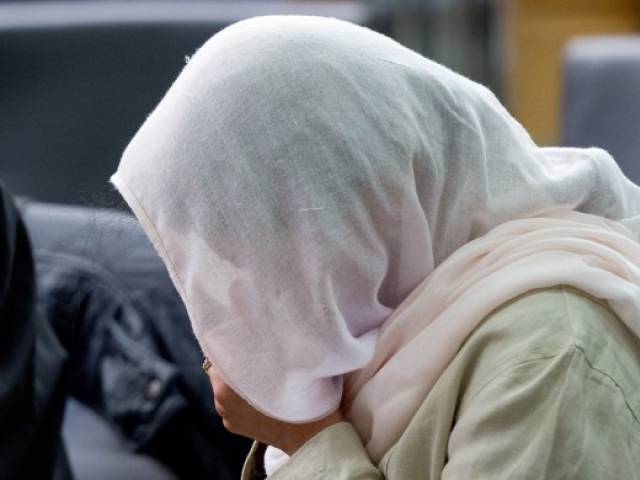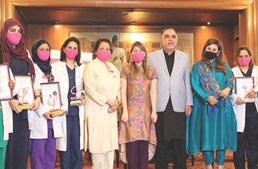LAHORE: Although the sound of a newborn’s cry brings joy to families waiting outside the intimidating labor ward doors, the journey into parenthood is everything but sweet for new moms who silently endure the obstetric violence that takes place within.

As per the World Health Organization (WHO), healthcare providers can be held accountable for obstetric violence if they physically or verbally abuse patients who are in labor in a hospital environment.
Some examples of this kind of behavior include: not anesthetizing patients, performing treatments without their consent, humiliating them, beating them, breaching their right to privacy during gynecological exams, ignoring their pain and worries, or not caring at all.
Thousands of low-income women endure the psychological fallout of a traumatic labor, as public hospitals in the province fail to supervise the behavior of medical staff and neglect the maintenance of hygiene in the delivery rooms, despite the fact that the World Health Organization recognizes obstetric violence as a serious violation of the right of women to dignified maternal care.
The mother of three, Shameem, whose identity has been changed for privacy reasons, was 21 years old when her mother-in-law rushed her to a public hospital after she went into early labor with her first child. No one on staff seems concerned about the medical garbage that was strewn around the labor ward. “The medical staff was completely indifferent towards patients who were in labor and completely disregarded the presence of filth,” Shameem recalled.
Shameem endured five or more hours of the labor ward’s cacophony: nurses’ unsympathetic jibes at a young patient, a doctor’s yelling at the family of another patient, a woman’s trembling after being smacked by a nurse, and another woman’s repeated shrieks as she underwent an unconsented episiotomy without local anesthesia.
Since the employees were hurriedly making deliveries, there was complete mayhem. She came clean about the lack of dignity drapes or curtains, which exposed ladies to male doctors who happened to be walking by and other patients on the hospital.
Shameem left the labor ward in the middle of her labor because she was traumatized by what she had seen. The doula in her neighborhood helped her give birth to her first child, a baby boy, in the comfort of her own home. The months that followed were challenging since I struggled to bond with my child due to my anxiousness.
“The sights, sounds, and smells of the labor ward still haunt me today, even after all these years,” Shameem claimed. She went on to add that she had taken out a loan to give birth to her two other kids at a private facility. Health psychologist and University of Punjab professor Dr. Rafia Rafique claims that victims of obstetric violence are more likely to suffer from postpartum depression and post-traumatic stress disorder.
“Whereas PTSD causes mothers to lose faith in the public healthcare system and avoid seeking medical assistance for future pregnancies, detaching themselves from their babies and causing anxiety and sleep disturbances, postpartum depression causes these same symptoms and more,” she noted.
Dr. Uzma Ashiq Khan, a clinical psychologist and gender studies professor at the Lahore College for Women University, agreed with Dr. Rafique that obstetric violence can have lasting psychological effects. She also said that society’s lack of focus on gender sensitization was the main issue.
“Girls are educated to keep quiet about delicate matters that could affect them negatively, and they are hardly given opportunities to practice making decisions. As a result, Dr. Khan argued, victims of abuse often go unrecognized and unaddressed because they lack the emotional intelligence or the words to describe the trauma they endured or the strength to confront the abusive authority figure.
Services Hospital obstetrician and gynecologist Dr. Tayyiba Wasim offers an opposing viewpoint, arguing that public health facilities’ lack of beds and cleaning equipment has worsened the problem.
“The workload on doctors is immense due to the bustle in government hospitals,” explained Salman Kazmi, General Secretary at the Young Doctors Association. Kazmi believed that the only real solution to the problem was to expand the public healthcare network and control the population.
Those in need of obstetric treatment may only hold out hope that, according to Kazmi’s approach, no lady, like Shameem, has to endure the horrors of the labor ward until the strain on public healthcare is reduced.










































